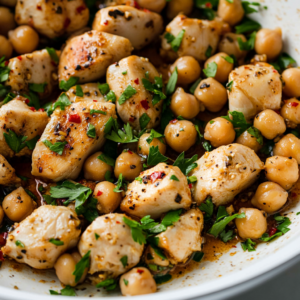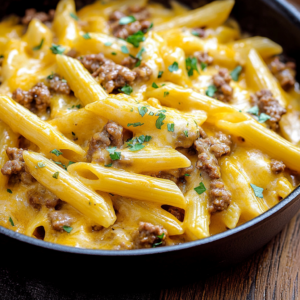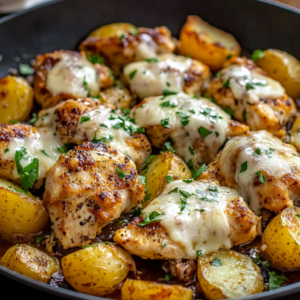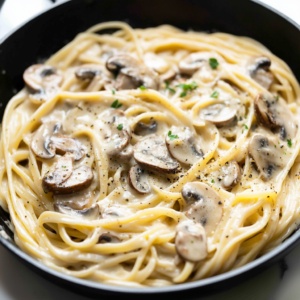Sharing is caring!
Table of Contents
ToggleIntroduction to Beef Arm Roast
When it comes to heartwarming and robust meals, the Beef Arm Roast stands out as a culinary favorite. A cut from the beef’s shoulder, this roast offers a rich texture and a deep, meaty flavor, making it a staple in kitchens worldwide. In this guide, we delve into the essentials of a perfect Beef Arm Roast Recipe, sharing insights on how to transform this humble cut into a succulent centerpiece for your dining table.
Selecting the right beef arm roast is pivotal. Look for cuts with good marbling – those white flecks of fat within the muscle – as they are key to a tender and juicy roast. Marbling not only enhances flavor but also ensures the meat remains moist during cooking.
The beauty of a Beef Arm Roast lies in its versatility. Whether you’re slow-cooking it to achieve that fall-apart tenderness or roasting it to a perfect medium-rare, each method brings out unique flavors and textures. And let’s not forget the seasonings – a combination of herbs, spices, and a good rub can elevate the roast to new heights.
But the journey of the Beef Arm Roast doesn’t end in the oven. Serving it is an art in itself. Pair it with sides that complement its robustness – think creamy mashed potatoes or a crisp, green salad. And for a truly unforgettable meal, consider a bold red wine that matches the roast’s richness.
As we explore the realm of Beef Arm Roast Recipes, we invite you to join us on this culinary adventure. Whether you’re a seasoned chef or a home cook, there’s always something new to learn and savor in the world of beef roasts. Let’s begin!
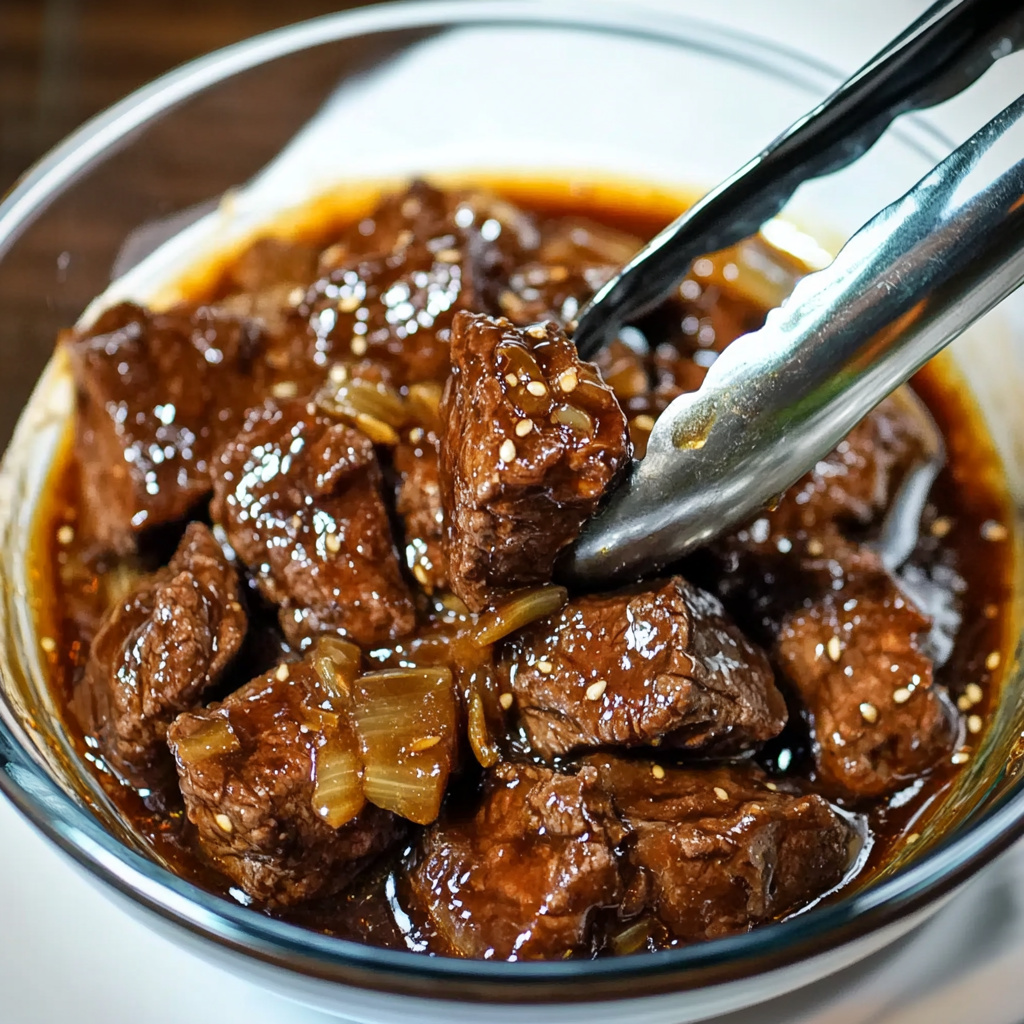
Selecting the Perfect Beef Arm Roast
Embarking on the Beef Arm Roast Recipe journey starts with choosing the ideal cut. This decision shapes the entire cooking experience and the final taste of your dish. The beef arm roast, nestled in the cow’s shoulder, is known for its rich flavors and succulent texture. Here’s how to select the best one for your recipe.
Firstly, eye the marbling. Quality beef arm roasts boast a generous marbling, the white streaks of fat crisscrossing the meat. This fat melts during cooking, infusing the roast with moisture and flavor. A well-marbled roast promises a tender, juicy outcome, essential for a successful Beef Arm Roast Recipe.
Next, consider the cut’s size and thickness. Think about your serving needs and ensure the cut is uniform in thickness for even cooking. A consistent thickness means no part of your roast will be over or undercooked.
Don’t overlook the color of the beef. Fresh beef arm roast should have a bright, cherry-red hue. This vibrant color indicates good oxygenation and freshness, key elements for a tasty roast.
Also, touch the meat. It should feel firm and spring back when pressed. This resilience is a sign of good quality and freshness, both crucial for a delectable roast.
Finally, build a relationship with your butcher. A knowledgeable butcher can provide valuable advice and may even offer cuts not readily available in regular stores. They can guide you in selecting the best beef arm roast for your specific recipe and cooking method.
By carefully selecting your beef arm roast, you lay the foundation for a memorable culinary experience. Each choice, from marbling to color, contributes to the richness and depth of your Beef Arm Roast Recipe, setting the stage for a deliciously satisfying meal.
Preparation and Seasoning Techniques for Beef Arm Roast Recipe
Mastering the Beef Arm Roast Recipe involves more than just cooking; it starts with thoughtful preparation and seasoning. These steps are crucial in transforming a simple cut of meat into a flavorful feast.
Begin with patting the beef arm roast dry. Removing excess moisture allows the seasoning to adhere better, ensuring every bite is packed with flavor. Use paper towels for this task for the best results.
Now, let’s talk about seasoning. A mix of salt, pepper, and a blend of your favorite herbs like rosemary, thyme, or garlic powder can significantly enhance the roast’s natural flavors. For an extra kick, consider adding a hint of paprika or cumin. The key is to generously coat the entire roast, rubbing the seasoning in for deeper flavor penetration.
Don’t rush the marinating process. If time permits, let the seasoned roast sit in the refrigerator for a few hours, or even overnight. This patience allows the flavors to meld and penetrate the meat, setting the stage for a more flavorful roast.
Before you start cooking, bring the roast to room temperature. This step is vital for even cooking. A roast straight from the fridge will cook unevenly, leading to tougher parts. Simply leave it out for about 30 minutes to an hour before cooking.
Finally, consider adding a basting component to your Beef Arm Roast Recipe. A mixture of olive oil, butter, or even a splash of wine can keep the roast moist and tender while adding another layer of flavor.
With these preparation and seasoning techniques, your Beef Arm Roast will not only be bursting with flavor but also cooked to perfection, offering a tender, juicy, and memorable meal.
Cooking Methods Explored for Beef Arm Roast Recipe
Delving into the Beef Arm Roast Recipe, the choice of cooking method can make or break the dish. Each technique offers a unique twist, enhancing the meat’s natural flavors and textures. Here, we explore various methods to help you achieve a perfectly cooked beef arm roast.
Oven Roasting:
The classic and most popular method. Preheat your oven to a moderate temperature, usually around 325°F (163°C). Place the seasoned roast in a roasting pan, preferably on a rack to ensure even heat distribution. The key is low and slow cooking; this allows the connective tissues in the arm roast to break down, resulting in a tender, juicy roast. The cooking time depends on the roast’s size and your desired level of doneness. A meat thermometer is your best friend here, ensuring you pull the roast out at just the right moment.
Braising:
Ideal for those who love a melt-in-your-mouth texture. Begin by searing the roast on all sides in a heavy-bottomed pot or Dutch oven. Once browned, add a liquid base — like broth, wine, or a mix of both — along with your chosen aromatics. Cover and let it simmer on a low heat on the stove or in the oven. Braising infuses the meat with moisture and flavor, making it exceptionally tender.
Slow Cooking:
For those who appreciate set-it-and-forget-it convenience. Place the roast in a slow cooker with your choice of broth, herbs, and vegetables. Cook on low for 8 to 10 hours. This method requires minimal attention, yet yields a flavorful and tender roast.
Each of these methods brings out the best in your Beef Arm Roast Recipe, offering different textures and depths of flavor. Whether you prefer the traditional oven roast, the tender braised version, or the effortless slow-cooked approach, mastering these techniques ensures a deliciously successful beef arm roast every time.
Beef Arm Roast Recipe
A Beef Arm Roast, known for its rich flavor and tender texture, makes for a perfect centerpiece in a hearty meal. Here’s a recipe to help you create a delicious and memorable roast.
Ingredients:
- 3-4 pound beef arm roast
- 2 tablespoons olive oil
- 2 teaspoons salt
- 1 teaspoon black pepper
- 1 teaspoon garlic powder
- 1 teaspoon onion powder
- 1 teaspoon dried thyme
- 1/2 teaspoon paprika (optional)
- 3 cups beef broth
- 2 onions, quartered
- 4 carrots, peeled and cut into chunks
- 4 celery stalks, cut into chunks
- 4 garlic cloves, minced
Instructions:
- Preparation: Begin by patting the beef arm roast dry with paper towels. This will help the seasoning stick to the meat.
- Season the Roast: In a small bowl, mix salt, black pepper, garlic powder, onion powder, dried thyme, and paprika. Rub this seasoning mix all over the roast, ensuring it’s well-coated.
- Sear the Roast: Heat olive oil in a large skillet over medium-high heat. Once hot, sear the roast on all sides until a brown crust forms, about 3-4 minutes per side. This step adds depth to the flavor.
- Prepare the Vegetables: While the roast is searing, place the quartered onions, carrots, celery, and minced garlic in the bottom of a roasting pan or a slow cooker.
- Cook the Roast: Transfer the seared roast on top of the vegetables. Pour beef broth around the roast. For oven roasting, cover with foil and cook in a preheated oven at 325°F (163°C) for about 3 hours. For slow cooking, cover and cook on low for 8-10 hours until the meat is tender.
- Rest and Serve: Once cooked, let the roast rest for 10-15 minutes before slicing. This allows the juices to redistribute. Serve with the cooked vegetables on the side.
Optional: For a thicker gravy, remove the roast and vegetables, and bring the cooking liquid to a simmer. Mix a tablespoon of cornstarch with a little water and stir into the liquid, cooking until thickened.
Enjoy your Beef Arm Roast with its tender, juicy meat and richly flavored vegetables!
Serving Suggestions and Pairings for Beef Arm Roast Recipe
The true magic of a Beef Arm Roast Recipe lies not just in its preparation, but also in how you serve and pair it. Here are some top suggestions to turn your beef arm roast into a feast for the senses.
1. Classic Side Dishes: Enhance your beef arm roast with traditional sides. Creamy mashed potatoes absorb the roast’s juices beautifully, offering a perfect balance of textures. Roasted vegetables like carrots, parsnips, or Brussels sprouts add a touch of sweetness and earthiness. For a lighter option, a crisp green salad dressed in a simple vinaigrette complements the richness of the meat.
2. Grain Alternatives: If you’re looking for something different, serve your roast with a side of quinoa or couscous. These grains are not only nutritious but also add an interesting texture contrast to the tender meat.
3. Bread Pairings: Fresh, crusty bread is ideal for mopping up the delicious juices and gravy. Consider a warm baguette or artisanal breads like ciabatta or sourdough to elevate the meal.
4. Wine Selection: A full-bodied red wine pairs splendidly with beef arm roast. Choose a Cabernet Sauvignon, Merlot, or a Shiraz to complement the deep, savory flavors of the meat. These wines stand up to the richness of the roast without overpowering it.
5. Creative Sauces: Experiment with sauces to add an extra zing. A horseradish cream or a red wine reduction can introduce new flavors and textures, enhancing the overall dining experience.
Remember, the key to a successful Beef Arm Roast Recipe is not just in how you cook it, but also in how you serve it. By thoughtfully pairing your roast with the right sides, bread, and wine, you can transform a simple meal into an unforgettable culinary experience.
Serving Suggestions and Pairings for Beef Arm Roast Recipe
The true magic of a Beef Arm Roast Recipe lies not just in its preparation, but also in how you serve and pair it. Here are some top suggestions to turn your beef arm roast into a feast for the senses.
1. Classic Side Dishes: Enhance your beef arm roast with traditional sides. Creamy mashed potatoes absorb the roast’s juices beautifully, offering a perfect balance of textures. Roasted vegetables like carrots, parsnips, or Brussels sprouts add a touch of sweetness and earthiness. For a lighter option, a crisp green salad dressed in a simple vinaigrette complements the richness of the meat.
2. Grain Alternatives: If you’re looking for something different, serve your roast with a side of quinoa or couscous. These grains are not only nutritious but also add an interesting texture contrast to the tender meat.
3. Bread Pairings: Fresh, crusty bread is ideal for mopping up the delicious juices and gravy. Consider a warm baguette or artisanal breads like ciabatta or sourdough to elevate the meal.
4. Wine Selection: A full-bodied red wine pairs splendidly with beef arm roast. Choose a Cabernet Sauvignon, Merlot, or a Shiraz to complement the deep, savory flavors of the meat. These wines stand up to the richness of the roast without overpowering it.
5. Creative Sauces: Experiment with sauces to add an extra zing. A horseradish cream or a red wine reduction can introduce new flavors and textures, enhancing the overall dining experience.
Remember, the key to a successful Beef Arm Roast Recipe is not just in how you cook it, but also in how you serve it. By thoughtfully pairing your roast with the right sides, bread, and wine, you can transform a simple meal into an unforgettable culinary experience.
Storing and Reheating Leftovers from a Beef Arm Roast Recipe
Enjoying the delicious results of a Beef Arm Roast Recipe often leads to leftovers, which, when stored and reheated correctly, can be just as enjoyable as the initial meal. Here’s how to handle your beef arm roast leftovers for the best experience.
Storing Leftovers:
- Cool Quickly: Allow the leftover beef arm roast to cool to room temperature as soon as possible. Prolonged exposure to warm temperatures can lead to bacterial growth.
- Airtight Containers: Transfer the cooled roast into airtight containers. This step keeps the meat moist and prevents it from absorbing unwanted flavors from your fridge.
- Refrigerate Promptly: Store the airtight containers in the refrigerator. Properly stored, beef arm roast will last for 3 to 4 days.
Reheating Leftovers:
- Oven Method: Preheat your oven to 350°F (175°C). Place the roast in an oven-safe dish, adding a few tablespoons of broth or water to prevent drying. Cover with foil and reheat for about 10-15 minutes, or until warmed through.
- Stovetop Method: For smaller portions, reheat slices in a skillet over medium heat. Add a bit of broth or water to keep the meat moist. Cover and heat for a few minutes, flipping the slices halfway through.
- Microwave: If you’re in a hurry, you can use the microwave. Place the beef in a microwave-safe container, cover loosely, and heat on medium power. Check frequently to avoid overheating, as this can toughen the meat.
Remember, reheating the beef arm roast correctly ensures that it remains tender and flavorful. Whether enjoying it as part of a meal or using it in sandwiches or salads, handling your leftovers with care allows you to extend the enjoyment of your Beef Arm Roast Recipe.
Expert Tips and Chef Insights for Beef Arm Roast Recipe
Achieving perfection in a Beef Arm Roast Recipe goes beyond following basic steps; it involves embracing expert tips and chef insights that elevate your dish. Here’s a compilation of professional advice to help you master this classic recipe.
1. Quality Matters: Start with the best quality beef arm roast you can find. Look for a cut with good marbling – this fat renders during cooking, adding flavor and tenderness to the meat.
2. Room Temperature is Key: Always let your beef arm roast sit out until it reaches room temperature before cooking. This ensures even cooking and helps avoid tough, unevenly cooked meat.
3. Searing is Crucial: Don’t skip the searing process. Searing the roast before cooking locks in flavors and creates a delicious crust. Use a high-heat setting to get a good sear on all sides.
4. Low and Slow: The secret to a tender beef arm roast lies in cooking it at a low temperature for a longer period. This method allows the connective tissues to break down, resulting in melt-in-your-mouth tenderness.
5. Invest in a Meat Thermometer: To avoid overcooking, use a meat thermometer. Cook your roast to an internal temperature of 145°F (63°C) for medium rare, or 160°F (71°C) for medium.
6. Rest Before Slicing: Allow the roast to rest for at least 15 minutes after cooking. Resting lets the juices redistribute, ensuring a moist and flavorful roast.
7. Get Creative with Herbs and Spices: Don’t be afraid to experiment with different herbs and spices. Rosemary, thyme, and garlic are classic, but feel free to add your own twist to the Beef Arm Roast Recipe.
FAQs and Conclusion for Beef Arm Roast Recipe
As you master the Beef Arm Roast Recipe, you might have some questions. Here are answers to frequently asked queries that will help you refine your approach and conclude with confidence.
1. How long should I cook a beef arm roast? The cooking time varies based on the size of the roast and the desired level of doneness. Generally, cook it in an oven at 325°F (163°C) for about 20 minutes per pound for medium rare.
2. Can I make this recipe in a slow cooker? Absolutely! A slow cooker is excellent for tenderizing the beef arm roast. Cook on low for 8-10 hours for best results.
3. How do I know when the roast is done? Use a meat thermometer. A temperature of 145°F (63°C) indicates medium rare, while 160°F (71°C) is medium.
4. What are the best herbs to use in a beef arm roast recipe? Rosemary, thyme, and garlic are classic choices. Feel free to experiment with your favorite herbs and spices.
5. Can I prepare the beef arm roast ahead of time? Yes, you can season and sear the roast, then refrigerate it overnight before cooking. This can enhance the flavors.
6. How do I store and reheat leftovers? Store leftovers in an airtight container in the refrigerator for up to 4 days. Reheat in an oven at 350°F (175°C) until warmed through.
In conclusion, the Beef Arm Roast Recipe offers a splendid combination of flavor and texture, making it an ideal dish for both casual dinners and special occasions. Remember to select quality meat, season generously, and cook it with care. With these tips and insights, each serving of your beef arm roast will be a delightful culinary experience, leaving your guests impressed and satisfied.


